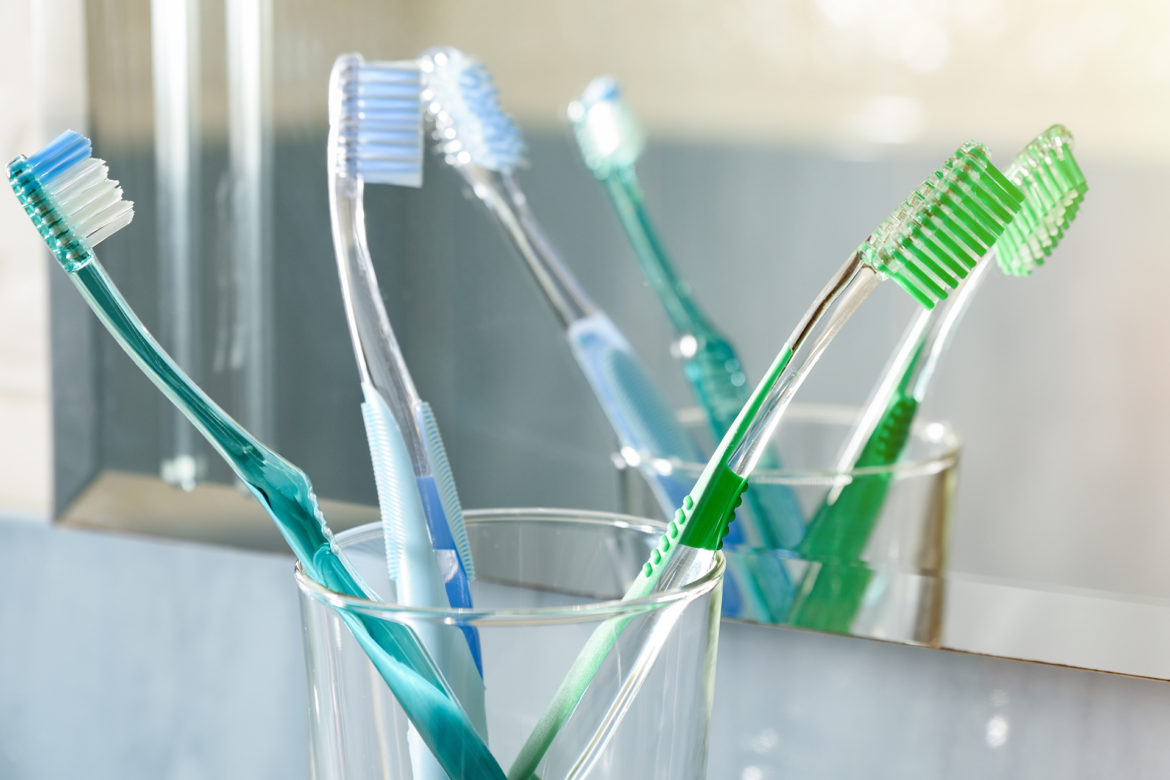When it comes to cleaning your teeth, the rules are pretty clear-cut: the American Dental Association recommends brushing for two minutes twice a day with fluoride toothpaste —anything less will compromise the health and appearance of your teeth.
But your toothbrush also needs specific care to keep your teeth their healthiest. “Ignoring the importance of changing your toothbrush regularly can leave you vulnerable to a buildup of bacteria and germs,” warns Chris Kim, D.D.S. of the Virginia-based practice Livewell Dental. “Not only can this lead to bad breath and plaque buildup, but it can also put you at risk for infections and illnesses.”
So, how often should we actually change our toothbrush?
“Both manual toothbrushes and electric brush heads
should be replaced every three months, and/or after each time you’re sick (whichever comes first),” says Whitney DiFoggio, R.D.H. (registered dental hygienist).
This is because “when your toothbrush gets old, the bristles start to harden or fray [and] can no longer effectively clean
your teeth, since bristles need to slightly flex when brushing,” DiFoggio explains. In addition, “Toothbrush bristles
tend to accumulate germs and can breed bacteria if you use them while you’re sick.”
Best to toss your brush or brush head when you’re feeling better — many experts believe this may protect you against
reinfection, although the Centers for Disease Control and Prevention (CDC) reports that there is no published research to support this.
How do I know my toothbrush needs replacing?
While three months is the recommended amount of time to keep a toothbrush or toothbrush head on an electric toothbrush, keeping an eye out for frayed, worn-out looking bristles (or any other changes such as discoloration or odor) can also be a good barometer of when it needs to be replaced. In fact, one study looked at wear and tear on a toothbrush, and found that toothbrushes with the most wear left brushers with more plaque on their teeth, even though the brushes were only three months old.
But even if it looks sprightly, the brush could be accumulating things you can’t see — and certainly don’t want anywhere near your mouth. “Simply put, failing to replace your toothbrush (or toothbrush head) frequently puts you at risk for unnecessary exposure to many strains of bacteria, including some nasty, pathogenic bacteria and viruses,” says Kansas-based dentist Jordan Weber, D.D.S.
Why do I need to change my toothbrush at least every three months?
If you must know, these major icks get onto the bristles because of other things you do in the bathroom, especially if you don’t close the toilet seat when you flush, says Dr. Weber. “If you leave any toothbrushes, oral care products, hair care products or other beauty products uncovered on a bathroom countertop, you really should be closing the toilet lid prior to flushing the toilet [because] the research on the topic of microbial hazards of flushing a toilet is, frankly, quite unpleasant to read,” Dr. Weber explains. “Ultimately, your toothbrush either needs to be covered, or else the toilet lid needs to be closed prior to flushing.”

